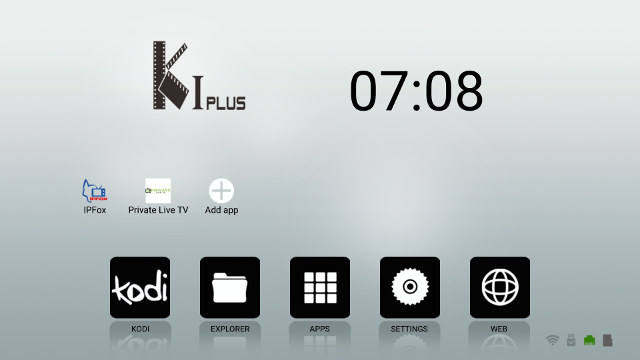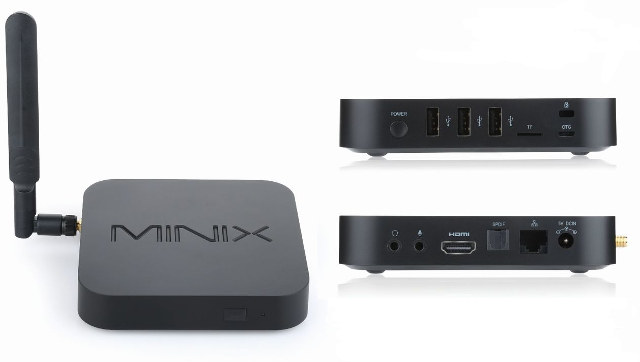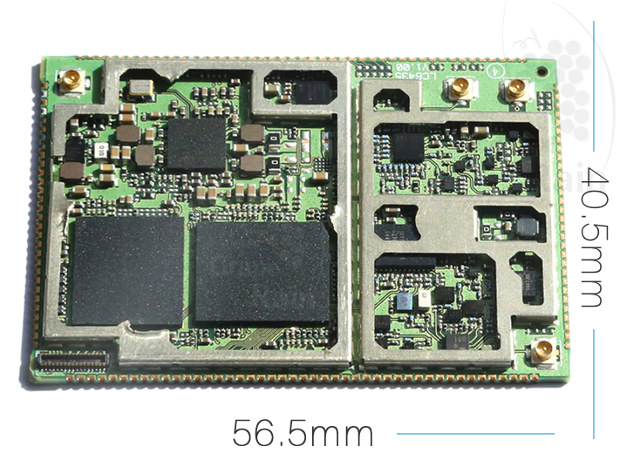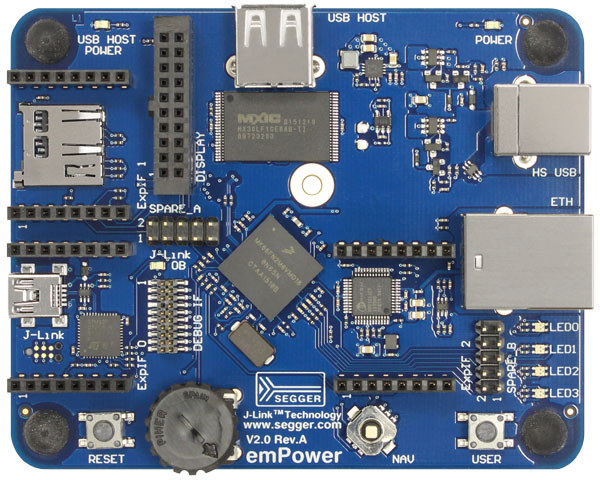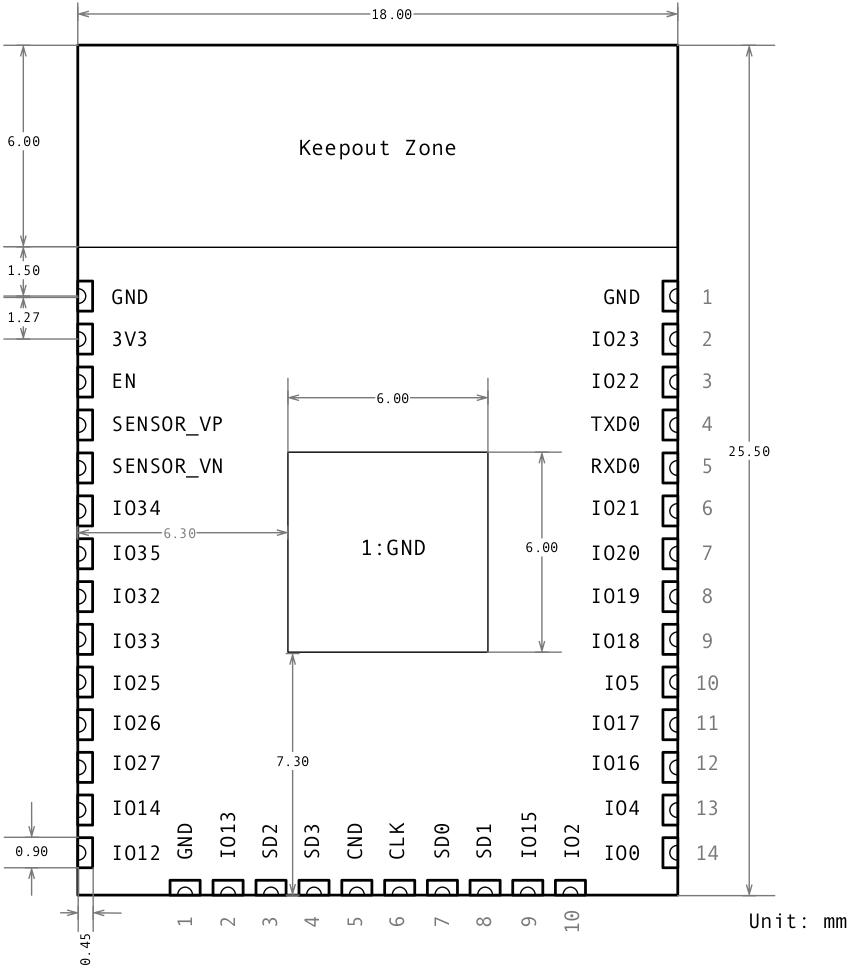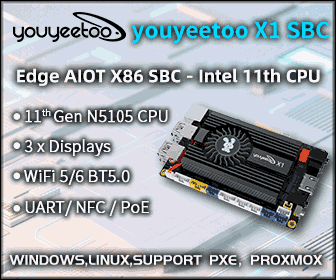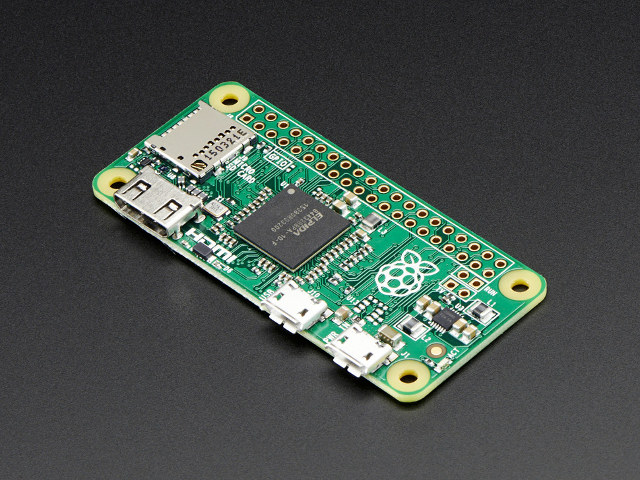Videostrong KI Plus is one of the first Amlogic S905 TV boxes to be launched on the market, and it also happens to be one of cheapest model selling for around $45 on various sites, and it’s even available for $39.99 on GearBest for Black Friday / Cyber Monday. I’ve posted the specifications and pictures of the device previously, and after updating the firmware, I’ve finally completed the review. First Boot, Settings and First Impressions As usual, I’ve connected a whole bunch of cables and peripherals to the device to make the power supply can handle it, including a USB hard drive, a USB webcam, a USB keyboard, a USB hub with two RF dongles for Tronsmart Mars G01 gamepad and MeLE F10 Deluxe air mouse, as well as a HDMI, optical audio and Ethernet cables, and a speaker connected to the 3.5mm AV jack and powered by one of […]
H.264 & H.265 4K Video Playback on Amlogic S905 Android TV Box
I’ve almost completed my review of Videostrong K1 Plus Android box powered by Amlogic S905, and while there are many shortcomings, 4K video playback is actually pretty good with Android’s Video Player (Kodi is not really usable @ 4K). I connected the device to LG 42UB820T 4K UHD TV, and set video output to 2160p @ 60Hz, and went through several video samples: Beauty_3840x2160_120fps_420_8bit_HEVC_MP4.mp4 (H.265 @ 30 fps – No audio) – OK big_buck_bunny_4k_H264_30fps.mp4 (H.264 @ 30 fps – MPEG1/2 and AC3 audio) – OK big_buck_bunny_4k_H264_60fps.mp4 (H.264 @ 60 fps – MPEG1/2 and AC3 audio) – Video looks somewhat OK, but big audio delay or AV sync issue. BT.2020.20140602.ts (H.265 Rec.2020 compliant – AAC audio) – OK (First time I can play this video on any hardware). Fifa_WorldCup2014_Uruguay-Colombia_4K-x265.mp4 (H.265 @ 60 fps – AC3) – Video is very good, but no audio MHD_2013_2160p_ShowReel_R_9000f_24fps_RMN_QP23_10b.mkv (10-bit HEVC @ 24 fps – no […]
MINIX NEO U1 Android Media Hub Combines Amlogic S905 Processor with 2GB RAM, 802.11ac WiFi
MINIX has posted several graphics on their Facebook page about a new NEO U1 media hub in the last few days. The company will launch the new model which include 2GB RAM, and 802.11ac WiFi next Friday (December 4, 2015) for $129.90 on their Amazon store, and other official resellers. MINIX NEO U1 specifications: SoC – Amlogic S905 quad core ARM Cortex-A53 @ up to 2.0GHz with penta-core Mali-450MP GPU @ 750 MHz System Memory – 2GB DDR3 Storage – 16GB eMMC 5.0 flash + micro SD card slot Video Output – HDMI 2.0 up to 4K @ 60 Hz with HDMI CEC support Audio – HDMI, optical S/PDIF, and 3.5mm headphone and microphone jacks Connectivity – Gigabit Ethernet, 802.11 b/g/n/ac Wi-Fi (2×2 MIMO) and Bluetooth 4.1 USB – 3x USB 2.0 host ports, 1x micro USB OTG port Misc – Power button, IR receiver, Kensington lock ready Power Supply – […]
Graperain Introduces G8916 Qualcomm Snapdragon 410 SoM and LTE Mobile Development Board
Qualcomm applications processors used to be found mostly in consumer devices like smartphones and tablets, but recently the company has expended their use to the embedded space, and for example, we’ve seen Snapdragon 410 64-bit ARM processor used in DragonBoard 410c board, Intrinsyc Open-Q 410 SoM, Inforce 6309 SBC, and today I’m going to have a look at Graperain G8916 system-on-module that’s also integrated into a 4G/LTE mobile development platform. G6916 CPU module specifications: SoC – Qualcomm Snapdragon 410 (MSM8916) quad core Cortex A53 processor @up to 1.4GHz with Adreno 306 GPU System Memory – 1GB DDR3 (2GB optional) Storage – 8GB eMMC 4.5 flash (16 and 32GB optional) + micro SD support up to 128GB via I/Os Connectivity – 802.11 b/g/n WiFi, Bluetooth 4.0 LE, FM, NFC/RFID, GPS/GLONASS with 4x on-module antenna connectors. Cellular Connectivity TD-LTE – B38/B39/B40/B41; FDD-LTE – B1/B2/B5/B/B26 TD-SCDMA -B34/B39 GSM – 850/900/1800/1900 CDMA – 1x/EVDO […]
Segger emPower is an embOS RTOS Evaluation Board with a J-Link OB Debug Interface
Segger, a company specializing in embedded software and hardware debugging tools, has recently launched Segger emPower, an evaluation board powered by Freescale Kinetis K66 Cortex M-4 MCU and including a J-LInk OB debug probe (JTAG/SWD), specially designed to evaluate the company’s embOS real-time operating system. emPower board hardware specifications: MCU – Freescale Kinetis K66 (MK66FN2M0VMD18) ARM Cortex M4F MCU @ 180MHz with with 256KB SRAM and 2MB flash memory Storage – 1Gbit NAND Flash + micro SD card connector Display I/F – 20-pin display adapter connector (5 V/3.3 V, SPI, PWM for backlight control) for small TFT displays Connectivity – Fast Ethernet USB – 1x USB device, 1x USB host (Full speed) Debugging On-board debug probe J-Link-OB with drag & drop (STM32F072, mini A/B-type connector); SWD/SWO only, no CDC/VCOM port support External debug interface (19-pin Cortex-M) including trace Expansion 3x Sensor Expansion Interface Devices (SExI) headers providing I2C, SPI buses, […]
ESP32 Module Schematics and Board Files
Espressif teased about their ESP32 WiSoC with WiFi and Bluetooth LE a few weeks ago in a letter addressed to developers, but did not release that much information. The company has now released some documents in the forums (registration required) concerning ESP32 module including PCB processing requirement, schematics and PCB layout, and bill of materials. The very first modules will actually be based on ESP31 processor, which only slightly differs from ESP32 with some swapped pins. The BoM is pretty small with several capacitors and resistors, one inductance, a 26 MHz crystal, ESP31, and a Gigadevice flash. The schematics have been designed with Orcad 16.6, so if you don’t have the program, you can read the schematics with Orcad 16.6 Lite, which is free to download. I’ve also printed the schematics to a PDF file. I’m not sure how to open the .pcb file which should be the module’s PCB […]
Raspberry Pi Zero is a $5 Board Based on Broadcom BCM2835 Processor
The Raspberry Pi board had some serious competition price-wise with products such as Orange Pi PC, NanoPi, or even C.H.I.P, but the Raspberry Pi foundation has lowered the price barrier even further with the Raspberry Pi Zero board, based on the same processor as the original Raspberry Pi (model 1) boards but clocked at a higher speed, and in a much smaller form factor, and launching at an unbeatable price: $5. Raspberry Pi Zero specifications: Processor – Broadcomm BCM2835 ARM11 processor @ 1GHz with VideoCore IV GPU System – 512MB RAM Storage – microSD slot Video Output – mini HDMI port and composite video (via 2 unpopulated pins) USB – 2x micro USB OTG ports for data and power Expansion – 40-pin through-holes Power Supply – 5V via micro USB port Power Consumption – 0.5-0.7W (100-140mA at 5.09V) according to Raspi.TV Dimensions – 65mm x 30mm x 5mm The board […]
Xiaomi MiPad 2 Tablet Runs Android or Windows 10 on Intel Atom x5-Z8500 Processor for $156 and Up
Xiaomi launched their first MiPad tablet last year with an Nvidia Tegra K1 processor and running Android, and the company recently introduced an update with MiPad 2, with similar features to the original one, but replacing the ARM processor by an Intel Atom x5-Z8500 quad core “Cherry Trail” processor supporting both Android and Windows. Gizmo China made a comparison table between the two model’s specifications which I reproduced and edited below. Model Mi Pad Mi Pad 2 Processor Nividia Tegra K1 quad core Cortex A15 @ 2.2 GHz Intel Atom X5-Z8500 quad core x86 up to 2.24GHz RAM 2 GB LPDDR3 Internal Storage 16 GB/32 GB + micro SD slot 16 GB/64 GB, no micro SD slot Display 7.9″ (2048 x 1536 pixels) Connectivity 802.11ac 2×2 Wi-Fi + Bluetooth 4.0 802.11ac 2×2 Wi-Fi + Bluetooth 4.1 USB micro USB USB type-C Camera 8 MP/ 5 MP Battery 6700 mAh 6190 […]


